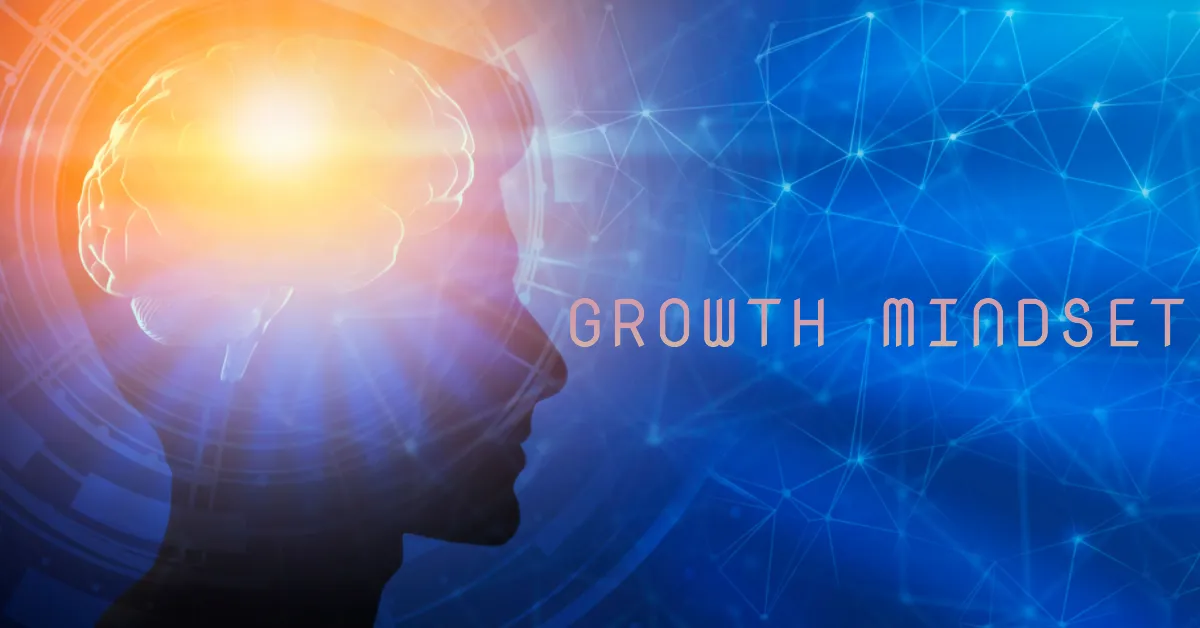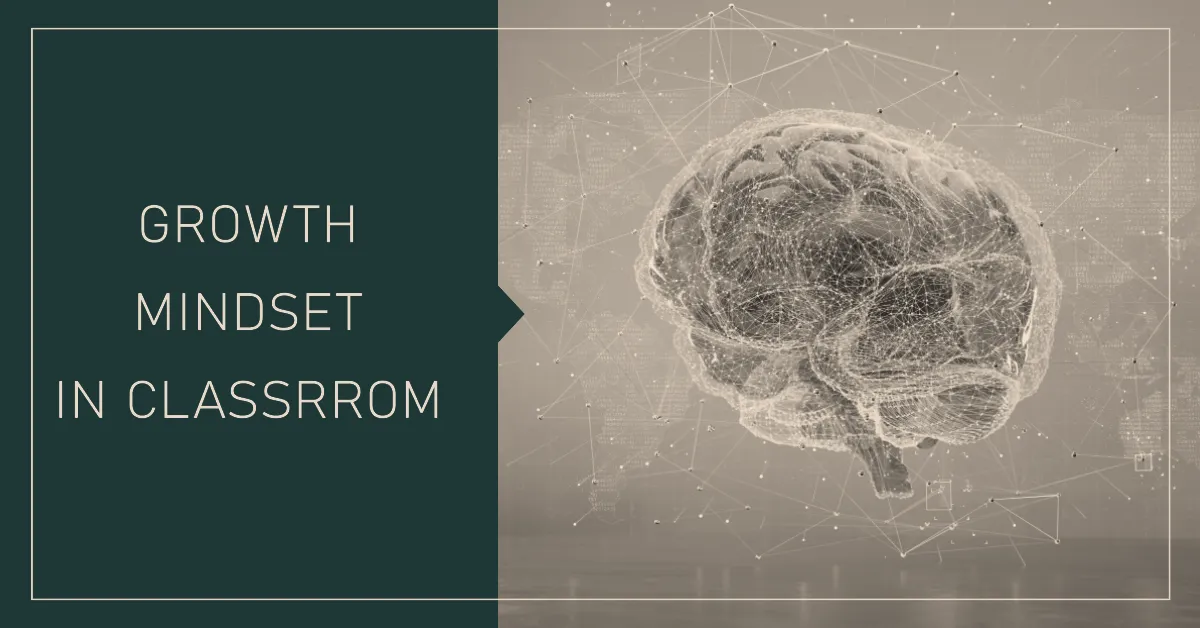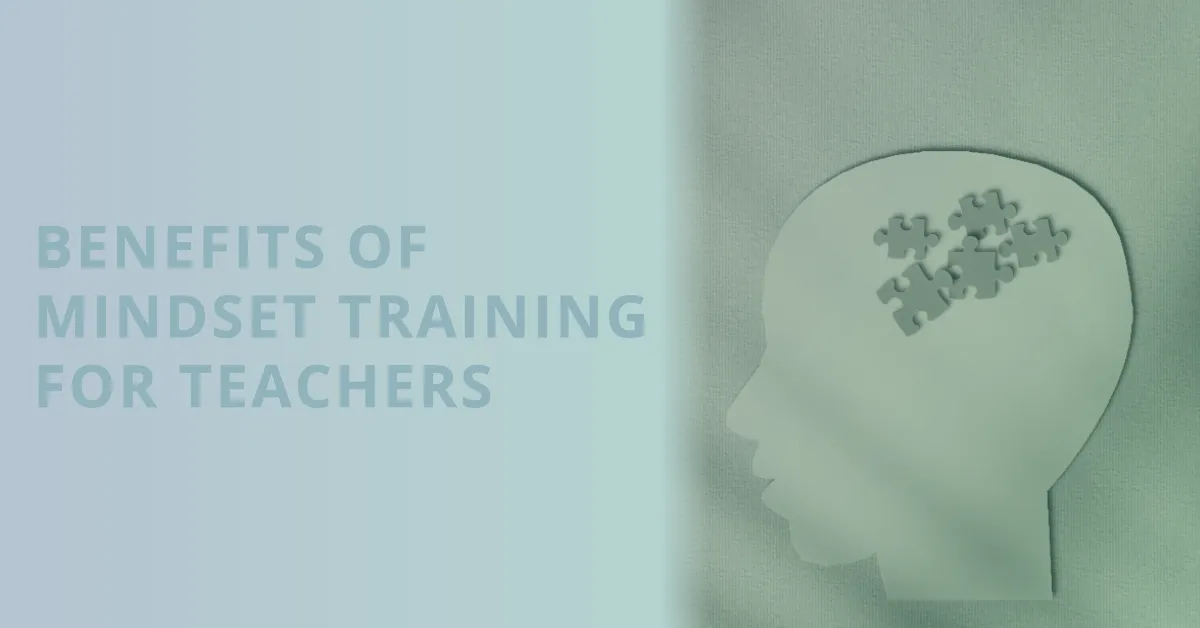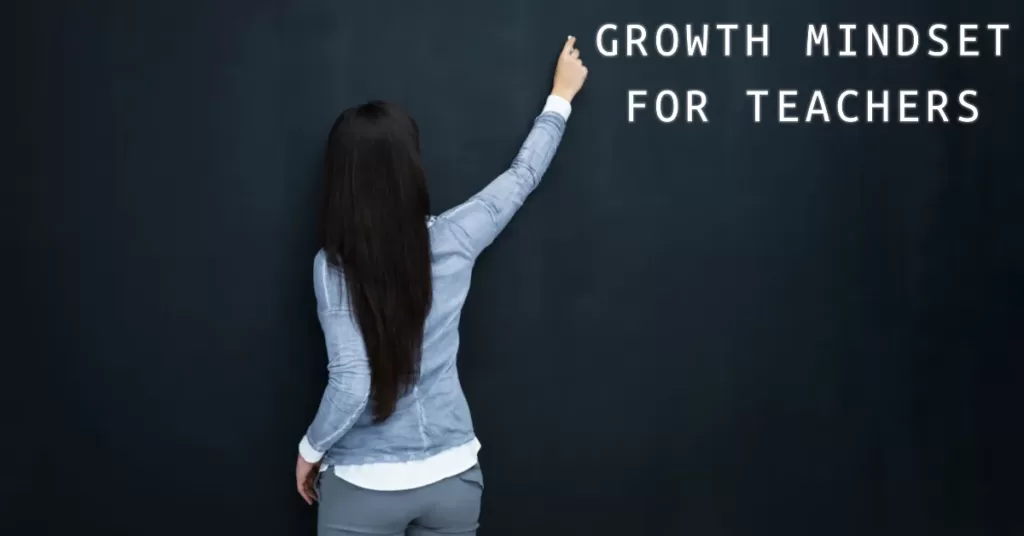As a teacher, you play a crucial role in shaping the minds of your students. But have you ever thought about how your own mindset affects the way you teach? Your beliefs, attitudes, and values can have a significant impact on student learning outcomes. That’s why it’s essential to cultivate a growth mindset as an educator.
In this article, we’ll explore what growth mindset is and how it applies to teaching. We’ll also look at some mindset training techniques that can help you develop a growth-oriented approach in the classroom. By the end of this piece, you’ll understand the benefits of adopting a growth mindset as a teacher and be equipped with practical tools to implement it effectively. So let’s dive in!
Table of Contents
Key Takeaways
- Mindset training can improve teacher wellbeing by reducing stress, building resilience, and enhancing positivity.
- Adopting a growth mindset benefits both teachers and students, leading to a more supportive learning environment where everyone feels empowered to take risks and learn from mistakes.
- Practical tools can help teachers implement growth mindset effectively, such as providing constructive feedback, encouraging effort over ability, and creating a sense of belonging in the classroom.
- Continuous learning and professional development contribute to a culture of ongoing personal and professional growth for teachers.
Understanding Growth Mindset
You gotta understand that having a growth mindset means you can improve your abilities with effort and practice, not just relying on natural talent or intelligence. It’s not about being a “know-it-all”, but rather being willing to learn and grow. A growth mindset is a belief that skills and talents can be developed through dedication and hard work. Adopting this mindset means embracing challenges, persisting through obstacles, seeing effort as necessary for success, learning from criticism, and finding inspiration in the success of others.
The opposite of a growth mindset is known as a fixed mindset. This type of thinking assumes that abilities are innate traits that cannot be changed or improved upon. People with fixed mindsets often avoid challenges to protect their self-image because they see failure as proof of their limitations. They also tend to give up easily when faced with obstacles and interpret criticism as personal attacks rather than opportunities for improvement.
Having a growth mindset has significant implications for teachers who want to help students develop their full potential. By fostering this way of thinking, teachers encourage students to embrace challenges instead of avoiding them, recover quickly from setbacks instead of giving up, put forth effort instead of relying solely on natural ability, seek out feedback instead of shying away from it, and look at successful peers as sources of inspiration rather than threats.
Understanding what it means to have a growth mindset is crucial if you want to become an effective teacher. By adopting this way of thinking yourself and promoting it among your students, you create an environment where everyone can reach their full potential through dedication and hard work rather than innate talent alone. So keep these principles in mind as you approach your teaching practice – the reward will be well worth it!
Cultivating Growth Mindset

When cultivating a growth mindset, it’s important to identify and challenge limiting beliefs that may be holding you back. Encouraging effort and persistence is also crucial in fostering a belief that intelligence and abilities can be developed through hard work. Providing constructive feedback helps individuals learn from their mistakes and improve upon their skills. By implementing these key points, you can help yourself and others develop a growth mindset that will lead to increased success and fulfillment.
Identifying and Challenging Limiting Beliefs
As a teacher, it’s important to recognize and challenge any limiting beliefs that may be holding you back from reaching your full potential. Limiting beliefs are thoughts or ideas that we hold about ourselves or the world around us that limit our ability to grow and succeed. These beliefs can be subtle and difficult to identify, but they have a profound impact on our mindset and behavior.
To identify and challenge limiting beliefs, start by examining your thoughts when faced with challenges or obstacles. Ask yourself if there are any negative thoughts or self-talk that might be holding you back. Then, try challenging these thoughts by asking yourself questions like “Is this belief really true?” or “What evidence do I have to support this thought?” By questioning these limiting beliefs, you can start to shift your mindset toward one of growth and possibility.
Some ways to help identify limiting beliefs include:
- Paying attention to negative self-talk
- Examining past experiences for patterns of self-doubt
To challenge limiting beliefs:
- Question the validity of the belief
- Look for evidence that contradicts it
Encouraging Effort and Persistence
It’s important to keep pushing yourself and never give up, even when the going gets tough. Don’t throw in the towel just yet – remember, Rome wasn’t built in a day! Encouraging effort and persistence is crucial when it comes to mindset training for teachers. By doing so, you can help your students develop a growth mindset that will serve them well throughout their lives.
One way to encourage effort and persistence is by using positive reinforcement. This means acknowledging your students’ efforts and progress, no matter how small they may be. By doing so, you are showing your students that you appreciate their hard work and dedication. In addition to that, celebrating small successes can motivate them to keep going even during difficult times. Another way to encourage effort and persistence is by providing a supportive environment where failure is seen as an opportunity for growth rather than a reason for giving up. This means emphasizing the importance of learning from mistakes and encouraging your students to take risks without fear of judgment or criticism. With these strategies in place, you can help your students build resilience and cultivate a growth mindset that will enable them to overcome any obstacle they may face.
| Strategies | Benefits |
|---|---|
| Positive Reinforcement | Acknowledges efforts and motivates students |
| Supportive Environment | Emphasizes learning from mistakes & cultivates resilience |
| Encouraging Effort over Ability | Helps students focus on the process rather than the outcome |
Providing Constructive Feedback
You can improve your students’ performance by giving them specific and actionable feedback on their work. Instead of simply telling them what they did wrong, try to provide suggestions for improvement. For example, instead of saying “This essay is poorly written”, give specific examples of areas where the student can improve such as “You could strengthen your argument by providing more evidence to support your claims”.
It’s also important to remember that feedback should be timely and consistent. Don’t wait until the end of a unit or semester to provide feedback. Instead, provide regular check-ins throughout the learning process so that students have time to make improvements before it’s too late. By providing constructive feedback in a timely manner, you can help your students develop their skills and achieve their full potential in the classroom.
Applying Growth Mindset in the Classroom

By embracing a growth mindset, you can create an atmosphere of endless possibilities in your classroom. This approach allows students to see challenges as opportunities for growth rather than obstacles to overcome. As a teacher, it is important to model this mentality by being open to feedback, encouraging risk-taking, and focusing on effort over innate ability.
One way to apply growth mindset in the classroom is by praising students for their effort rather than their intelligence or talent. By doing so, you communicate that success is not based on natural ability alone but also on hard work and persistence. Encourage students to take risks and make mistakes without fear of failure. Emphasize the learning process rather than just the outcome of assignments or projects.
Another strategy for applying growth mindset in the classroom is by teaching students about neuroplasticity – the concept that our brains are malleable and capable of change throughout our lives. By understanding how their brains work and how they can develop new neural pathways through practice and repetition, students become more motivated to put in extra effort toward achieving their goals.
Implementing growth mindset language into your daily interactions with students can have a significant impact on their attitudes toward challenges and setbacks. Encourage phrases such as “I haven’t mastered this yet” instead of “I can’t do it” or “This will require more effort” instead of “This is too hard”. These simple changes help shift the focus from fixed abilities to developing skills through perseverance.
By embracing a growth mindset in your classroom practices, you provide an environment where resilience and determination are valued over innate talent or ability. Your efforts will enable your students to develop a love for learning that extends beyond academic subjects into all aspects of life – creating endless possibilities for them both now and in the future!
Mindset Training Techniques
So you’ve learned about applying growth mindset in the classroom, but how can teachers develop their own growth mindset to better support their students? That’s where mindset training techniques come in. By intentionally cultivating a growth-oriented perspective, educators can model and reinforce this approach for their students.
Here are five effective mindset training techniques that teachers can use:
- Mindfulness practices: Mindfulness meditation and breathing exercises can help teachers focus on the present moment, reduce stress, and increase self-awareness.
- Reframing negative self-talk: Teachers can learn to recognize when they’re engaging in negative self-talk and reframe those thoughts with more positive language.
- Seeking feedback and learning from failure: By actively seeking out feedback from colleagues or students, teachers can identify areas for improvement and adjust their teaching strategies accordingly. Similarly, embracing failure as an opportunity for growth rather than a personal shortcoming is key to developing a growth mindset.
- Practicing gratitude: Cultivating feelings of gratitude has been shown to improve overall wellbeing and increase resilience. Teachers might start each day by writing down three things they’re grateful for or expressing appreciation for specific student achievements.
- Engaging in professional development: Continuously learning new teaching methods, attending workshops or conferences, or pursuing advanced degrees all contribute to a culture of ongoing personal and professional growth.
By incorporating these techniques into their daily routine, teachers can strengthen their own growth mindset while also modeling this approach for their students. This ultimately creates a more supportive learning environment where everyone feels empowered to take risks, make mistakes, and learn from them.
Benefits of Mindset Training for Teachers

If you’re looking to improve your teaching skills and create a more positive learning environment for your students, mindset training may be worth exploring. By incorporating mindset training techniques into your routine, you can experience improved wellbeing as a teacher while also enhancing student engagement and motivation. In turn, this can lead to higher academic achievement for your students and a more fulfilling teaching experience for yourself.
Improved Teacher Wellbeing
Improving teacher wellbeing is essential for creating a positive and productive learning environment for students. When teachers are mentally and emotionally healthy, they can provide better support to their students and create a safe space for learning.
Here are three ways mindset training can improve teacher wellbeing:
- Reducing stress: Mindset training teaches teachers how to manage their stress effectively. By learning how to cope with stress in healthier ways, teachers can maintain a sense of calmness and balance in their lives.
- Building resilience: With the help of mindset training, teachers learn how to bounce back from setbacks and challenges. They become more resilient, which helps them overcome difficult situations without becoming overwhelmed or discouraged.
- Enhancing positivity: Mindset training encourages teachers to focus on positive aspects of their work instead of dwelling on negative thoughts and feelings. This shift in perspective helps them stay motivated and committed to their profession, leading to greater job satisfaction overall.
Enhanced Student Engagement and Motivation
Now that you understand the importance of improved teacher wellbeing, let’s move on to the next subtopic: enhanced student engagement and motivation. As a teacher, you know how challenging it can be to keep students engaged and motivated in the classroom. However, with the right mindset training, you can learn techniques that will help you inspire your students.
When teachers are able to maintain a positive mindset and model resilience in the face of challenges, they create an environment that is conducive to learning. By cultivating a growth mindset in yourself as well as your students, you can foster a love of learning and encourage your students to take risks and embrace failure as part of the learning process. By creating a sense of belonging in your classroom through mindfulness practices and community-building activities, you can help your students feel more invested in their education. With these tools at your disposal, you’ll be better equipped to engage and motivate even the most disengaged learners.
Higher Academic Achievement
You can achieve higher academic success by implementing effective strategies that motivate and challenge you to excel in your studies.
Here are three ways to improve your academic achievement:
- Set specific goals: Determine what you want to achieve academically, and break down the steps needed to reach those goals.
- Seek feedback: Ask for constructive criticism from teachers and peers to identify areas where improvement is needed.
- Utilize resources: Take advantage of study groups, tutoring services, and other resources available to help you succeed academically.
By adopting these strategies with a growth mindset, you can overcome obstacles and achieve higher academic success. Remember that learning is a lifelong process, so stay motivated and never stop striving for excellence!




